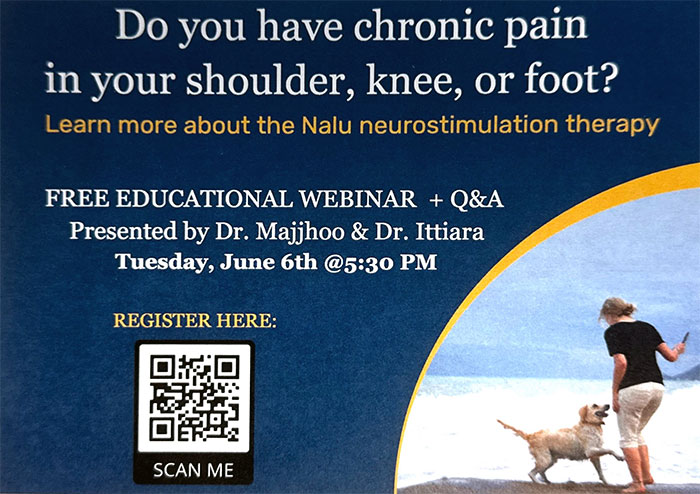Vertebroplasty and Kyphoplasty are used to treat painful vertebral compression fractures in the spinal column, which are a common result of osteoporosis or spinal injury. Our radiologists use imaging guidance to inject a cement mixture into the fractured bone (Vertebroplasty), or insert a balloon into the fractured bone to create a space and then fill it with cement (Kyphoplasty).
Patients that have undergone Vertebroplasty or Kyphoplasty have often reported a significant reduction in pain within one to two days after the procedure is completed and are able to resume their daily physical routines shortly after.
FREQUENTLY ASKED QUESTIONS
What are the benefits of having this procedure?
Vertebroplasty and Kyphoplasty provide several benefits:
- Allows the patient to return to normal activity. Due to the pain level associated with compression fractures, most patients are unable to perform everyday tasks. The Vertebroplasty procedure is able to stabilize the fracture. Within a few days, most patients are able to resume their previous levels of activity with a new level of improved mobility.
- Reduces the need for pain medications. The Vertebroplasty process is able to reduce the need, or in some cases fully eliminates the need for related pain medications.
- Helps to prevent further fractures from occurring. The acrylic cement is able to fill the spaces in the bones that have been weakened by osteoporosis. As a result, the treated bone is less likely to crack or fracture again, eliminating the need for short-term “follow up” visits.
How do I know if I am a candidate?
An NeuroInterventional Pain Management Radiologist NeuroInterventional Pain Management will perform an initial consultation to confirm the presence of a compression fracture that may benefit from Vertebroplasty or Kyphoplasty treatment. The consultation may require prior diagnostic imaging including spine X-rays, magnetic resonance imaging (MRI) and/or a CT scan.
How do I prepare for this procedure?
You will need to have blood drawn for tests prior to the procedure to determine if your blood clots normally.
On the day of the procedure, you should be able to take your usual medications with sips of water or clear liquid up to six hours before the procedure. You should avoid drinking juice, cream and milk and be sure to follow your doctor’s instructions.
In most cases, you should take your usual medications, especially blood pressure medications. These may be taken with sips of water on the morning of your procedure.
Other than medications, you may be instructed to not eat or drink anything for several hours before your procedure.
You should plan to have a relative or friend drive you home after your procedure.
How is this procedure performed?
Patients are first given mild sedation through an IV inserted in the arm before the procedure. Once sedated, an interventional radiologist makes an incision near the compression fracture. A tube is placed into the vertebral body and a balloon is then passed down the tube and inflated to restore the height of the vertebral body. Once the vertebra has regained its natural height, special cement is injected into the space and the tube is removed. The cement hardens once in the vertebral body, creating permanent support for the vertebrae.
What should I expect after the procedure?
Once the procedure is completed, the cement will harden in an average of 10 minutes. Patients will then be required to lie on their back for an average of two hours until the cement fully hardens.
A bandage will be placed on the patient’s skin where the puncture was and the patient will then be sent on their way. Patients should plan to have a relative or friend drive them home after the procedure.
General activities and most regular medications can be resumed shortly after the procedure, though it is recommended that the patient have 24 hours of bed rest once the operation is completed. There may be some related pain around the puncture area, but an ice pack can help to relieve the soreness.


